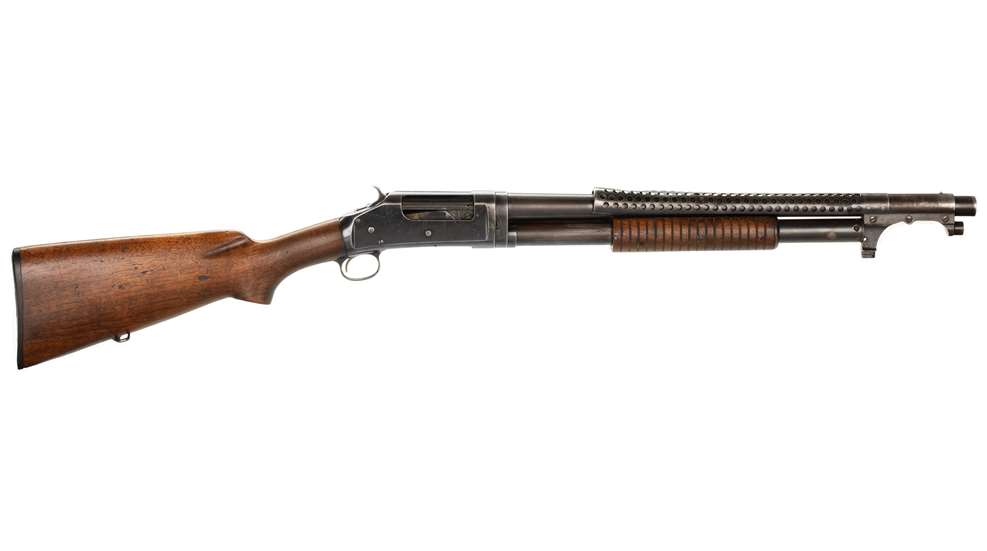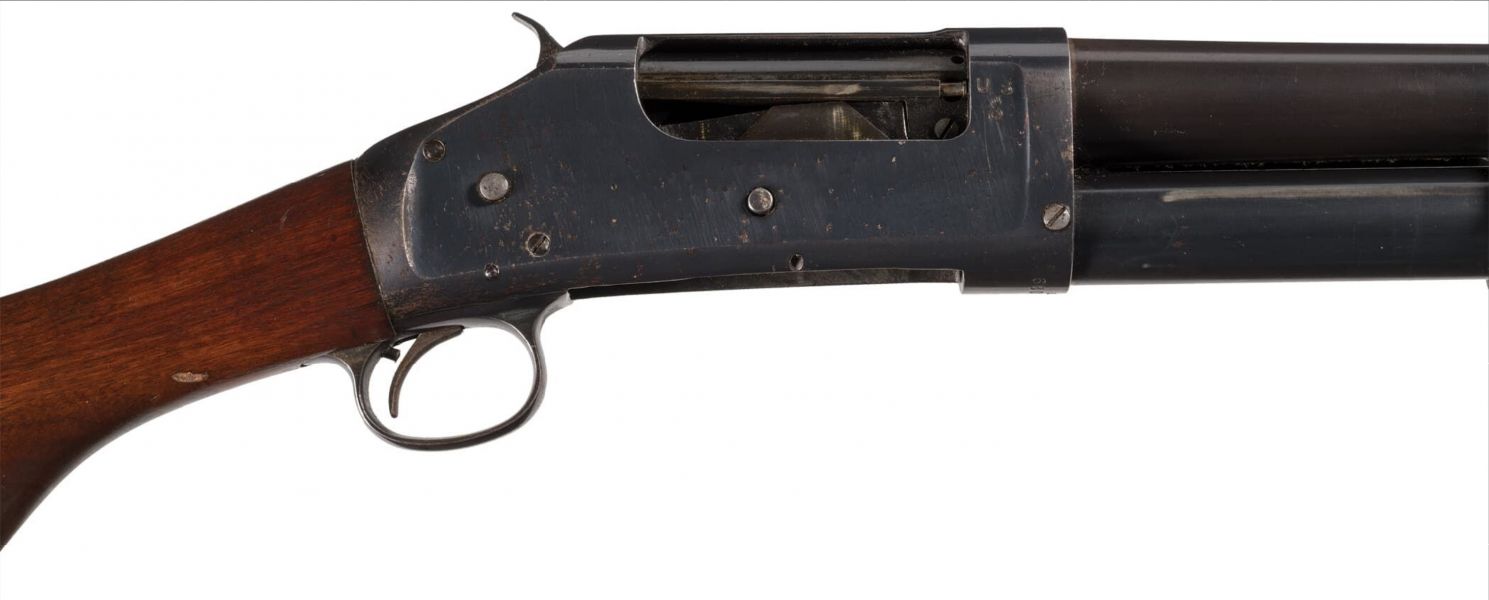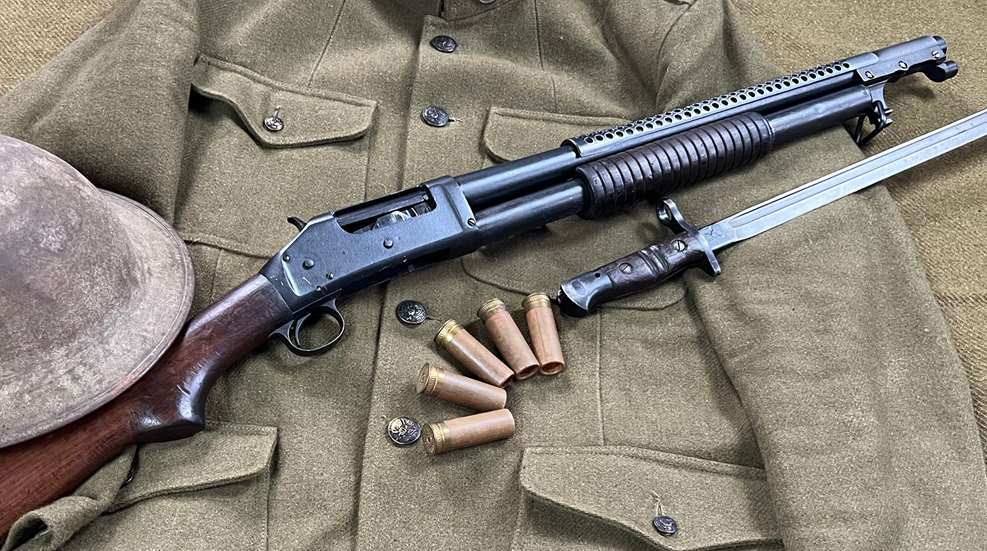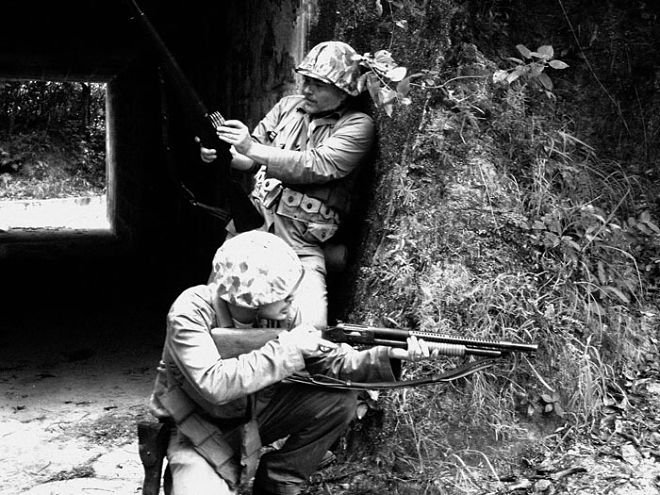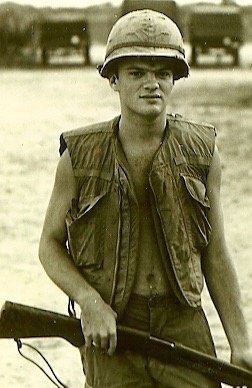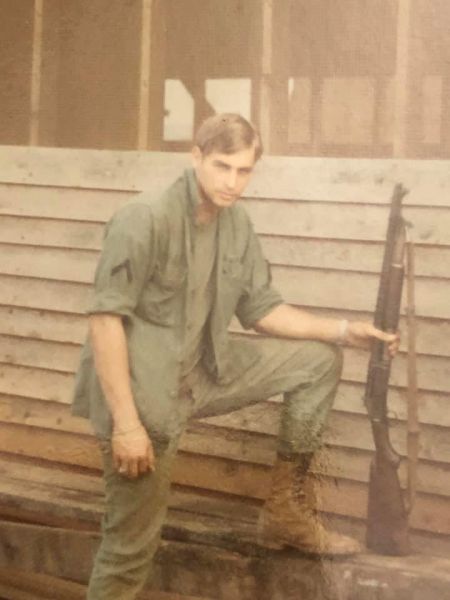M1897 Trench Gun
| Factions | Weapon | Icon | Classes | Ammo |
|---|---|---|---|---|
 VC |
 M1897 Trench Gun |
 |
5+1 / 20 |
| Damage Base | Headshot × | Chest × | Stomach × | Leg × | Arm × | Bayonet | Rifle Grenades | Reload Speed | |
|---|---|---|---|---|---|---|---|---|---|
| Partial | Empty | ||||||||
| 25x6 | ×2.5 = 62.5 | ×1.5 = 37.5 | ×1.25 = 31.25 | ×0.9 = 22.5 | ×0.85 = 21.25 | YES | NO | 1.66 Seconds | 4.833 Seconds |
| Designation | Weapon Type | Fire Modes | Fire Rate | Bullet Spread ° | Range Modifier | Muzzle Velocity | Projectile weight | Weight |
|---|---|---|---|---|---|---|---|---|
| M1897 | Shotgun | Single Shot | 75 RPM | 9° & 3° ADS | 0.8 | 403 m/s | 0.7 g (10.8027 gr) | 3.6 kg (7.9 lbs) |
| Full name | Caliber | Place of Origin | Date | Manufacturer | Barrel Length | Total Length | Weapon Script Name |
|---|---|---|---|---|---|---|---|
| Winchester Model 1897 | 12 gauge | USA | 1897 | Winchester Repeating Arms Company | 20 in (510 mm) | 39.25 in (997 mm) | weapon_m1897 |
The Winchester Model 1897, also called the Model 97 or Trench Gun, is a pump-action shotgun with an external hammer and tube magazine made by Winchester. Designed by John Browning, it saw extensive use by the military, law enforcement, and hunters from 1897 through to the Vietnam war, with over one million produced in various configurations.
HISTORY
The Winchester Model 1897, designed by John Moses Browning, debuted in November 1897. It was initially offered as a 12 gauge solid frame, later adding takedown models in 12 and 16 gauge. An enhanced version of the Winchester 1893, it featured a thicker receiver for smokeless powder shells, a rarity at the time.
The Model 1897 shotgun saw significant use during the Philippine–American War, with 200 weapons sent to counter Moro tribesmen. It gained popularity before World War I, with increased sales due to military demand. Modified for trench warfare, it featured a heat shield and bayonet lug. Its 20-inch barrel and buckshot ammunition made it effective in close combat. The Model 1897's rapid firing, known as "slam firing," earned it the nickname "trench sweeper" and caused fear among Germans. Even the Germans adopted a modified version called the "trench Mauser." It continued service in World War II, the Korean War, and the Vietnam War.
SOURCE
-
Serviceman in Vietnam with an M1897 “Trench Gun”. ~1970
